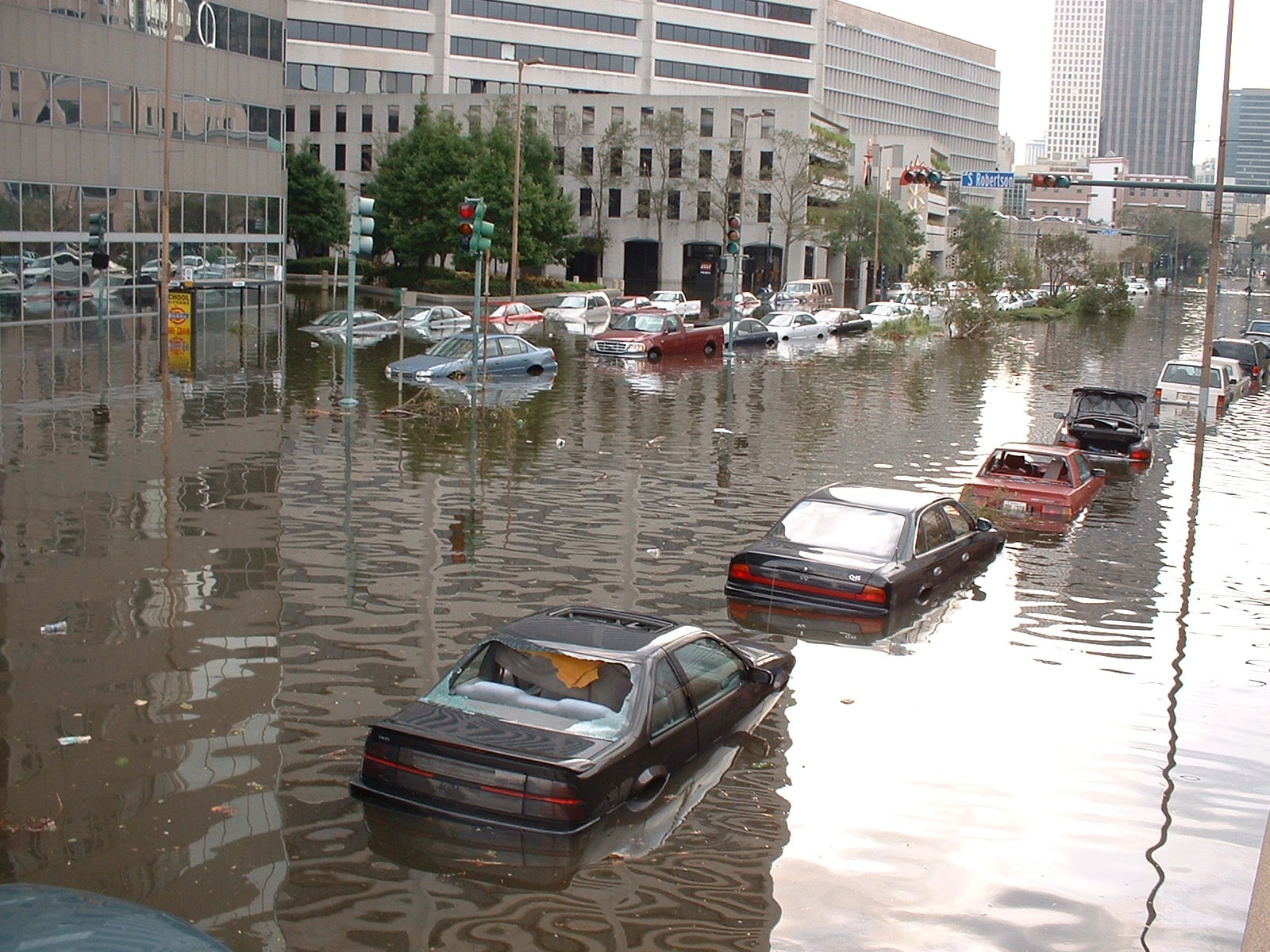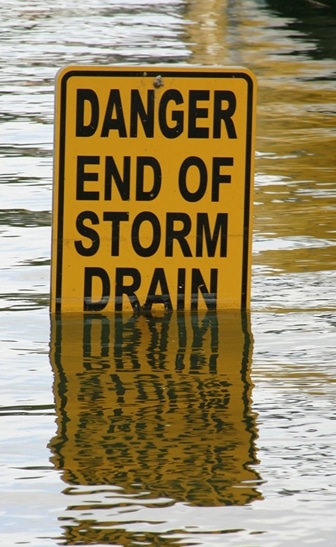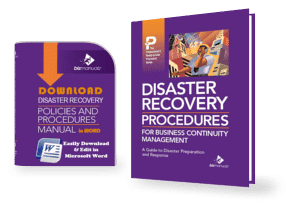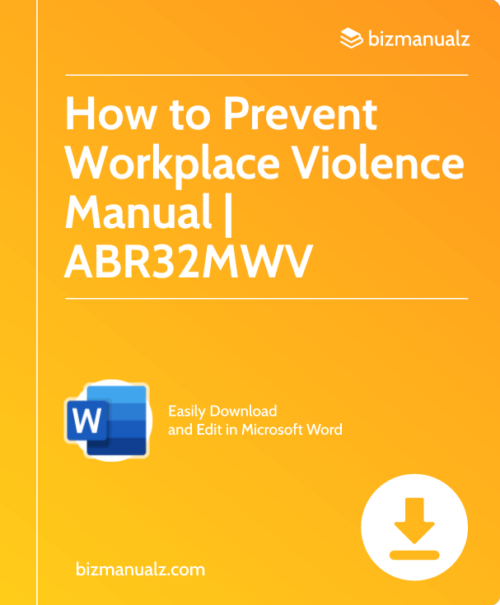What are the Steps to Disaster Management Planning?

A disaster is any event that will significantly impact your company’s operations — and I mean Anything. Traditionally, this means a hurricane, fire, flood, or earthquake. Non-traditionally, this means a toxic waste release, computer system crash, power outage, labor strike, community illness and many others. Unfortunately, disasters happen more frequently than we would prefer. So how can you use disaster management planning to make sure you’re prepared?
Steps to Disaster Management Planning
No one is exempt from a disaster, and most organizations are unprepared if a disaster erupts, unless your company has prepared a Disaster Plan with disaster procedures that accounts for any disaster that will exceed your ability to respond effectively: a worst-case scenario.
Disasters result from three (3) types of incidents, caused by:
1. Natural or cataclysmic events (i.e., hurricane, earthquake, fire, flood, storm, pandemic);
2. Human behavior (i.e., robbery, bomb threat, arson, hostage event, transportation strike); and
3. Technological breakdowns (i.e., power outage, computer crash, computer virus).
Planning Your Disaster Plan
The key to disaster management is to have a disaster plan in place before disaster strikes. Your disaster plan should include set of simple, effective disaster recovery guidelines and disaster procedures for all people to follow. Just as a ship without a rudder is at the mercy of the tides, a company without a disaster plan is at the mercy of potentially tragic events.
After a review of disaster responses following various disasters, U.S. regulators are now urging firms to improve business continuity and disaster recovery plans.
Human beings tend to make inappropriate decisions during a crisis. So, if your company has a plan already prepared for coping with most emergencies and you have shared the plan with your employees, then you stand a better chance of surviving an emergency and recovering rapidly.
Planning for an Emergency
When planning for an emergency, you should be prepared for an event that will cause one or more of the following results to occur in your community:
- The governor of the state or another competent authority declares the community a disaster area.
- Martial law is declared, the National Guard is activated, and basic civil rights are suspended.
- A state of total lawlessness in the community; law enforcement agencies are unable to cope with the results, even with the assistance of the National Guard.
- One third of the community dies immediately, or becomes so gravely disabled that they are unable to care for themselves or others.
- One third of the community is unavailable, unable or unwilling to help in disaster recovery efforts.
- One third of the community becomes responsible for the welfare of the remainder of the community, assuming roles and responsibilities for which they may be untrained and unprepared to handle.
Traditional roles and routine activities within the community are temporarily suspended. This causes the reassignment of personnel to fulfill necessary roles and functions, with temporary powers, duties and responsibilities.
A 72-hour interruption of:
- Basic emergency and transportation services, such as police, fire and medical assistance, and both public and private forms of transportation. Routine calls for service are not answered, and the agencies’ priorities will involve life-threatening situations only.
- Food, water and survival supplies. Deliveries to food stores and hospitals are interrupted or hijacked.
- People immediately strip existing supplies of all kinds, stockpiling their own reserves. Water pipes break, crack or clog, reducing or eliminating water flow.
- Electrical power, sanitation services, sewer. Power lines are destroyed, overloaded or collapse. Water flow is restricted, and sewer pipes break, crack or clog and back up. Effluent reservoirs burst and flood the surrounding area with untreated waste.
Vendors of products and services will be unable to fulfill their roles, either because the geographical area affected by the disaster is closed to outside traffic; phone lines are down and information cannot be shared; or the vendors will be too busy answering calls for service from other clients also affected by the disaster. Leverage technology to help your business during a disaster. Think about ways to work remotely, doing more business over the internet, and meet with customers/supplier virtually.
Have you planned for a disaster as if you will not have any outside help for at least three to five days? Your disaster plan should allow you to be self-sufficient during that minimum amount of time, and preferably longer.
Disaster Management Planning and Business Recovery Goals
The three primary goals of disaster management planning and business recovery are to:
1. Protect What’s Important
You must eliminate or reduce the potential for injuries or the loss of human life, damage to facilities, and loss of assets and records. This requires a comprehensive assessment of each department within your company to insure that appropriate steps have been taken to:
- Minimize disruptions of services to the company and its customers;
- Implement business security measures to minimize financial loss;
- Provide for a timely resumption of operations in the event of a disaster; and
- Reduce or limit exposure to potential liability claims filed against the company, and its directors, officers and other personnel.
2. Contain the Disaster
Immediately invoke the emergency provisions of your Disaster Management Plan to stabilize the effects of the disaster, allowing for appropriate assessment and the beginning of recovery efforts. Then contain the disaster to minimize the impact and provide for the fastest business recovery.
3. Begin Disaster Recovery
Implement the disaster procedures contained in your Disaster Management Plan according to the type and impact of the disaster. Your disaster procedures should prioritize all recovery efforts as follows:
- Employees: Not only must you ensure employee survival as a basic human concern, but also for their performance in helping others on your company premises when the disaster strikes.
- Customers: Just as important as your employees, you must ensure the survival or care of your customers affected by the disaster; physically, mentally, emotionally and financially.
- Facilities: After ensuring the safety of employees and customers, you must then secure your facilities as shelter for both people and assets.
- Assets: Although for the most part recoverable through insurance, assets will only be addressed after people and facilities are secure.
- Records: As with assets, you will only address the recovery and reconstruction of important records when all of your employees and customers are cared for, your facilities are secured, and all of your assets have been audited and stored.
Is Workplace Violence Included in Your Disaster Recovery Plan?
Assault is the most feared personal crime. You can be assaulted physically, mentally and emotionally. Statistically, one in every four Americans will become the victim of a violent act during your lifetime, either at home, at work — or any place in between. Assaults do not just happen to “other people”. Anyone — even you — can become a victim of workplace violence.
By understanding the cause and effect relationships between personal and work habits, a company’s policies and operating procedures and the behaviors exhibited by both victims and offenders, you can implement both a comprehensive personal and company-wide security and safety program that will significantly reduce most safety risks.
This information is essential for preventing crimes of violence and for surviving violent events if your prevention efforts fail. Victims who prevent or survive violent events generally report having had a defensive plan of action, consisting of a strategy and thoughtful tactics and response techniques.
Disaster Management Preventive Action
Your disaster management planning process should include preventative actions designed to accomplish a common goal — to prevent you from becoming a victim of a violent act, or at least to reduce the likelihood of serious injury. Your Disaster Recovery Plan is a strategic planning, training and reference tool for helping you to decide what to do before, during and after a violent event. Tactics that work for one person may not work for another. The choices — and your success or failure — are all yours. You can, after all, do everything right and still lose, and everything wrong and still win.
You have more work to do if you are truly committed to developing a safe working environment for your company, including:
- Conducting a survey of your employees to help you determine if, in fact, you even have a potential problem. Your insurance company’s risk management department may provide the survey form — or even conduct the survey for you.
- Contacting your local, state and federal emergency and crisis management agencies, insurance providers and other community resources for more information. The agencies, providers and other service groups often offer literature, signage, training programs and counseling referrals that you can adapt to your workplace.
- Using a computer online service to locate and contact other resources, such as articles in periodicals, online focus groups and other similar companies that have experienced the same events that you are trying to prevent. You can benefit from other peoples’ mistakes.
Developing a Safe Workplace
The process of developing and maintaining safe places to live and work is an evolutionary one. Learn to be conscious, ever-vigilant and adaptable to life’s circumstances. Coping with crimes of violence involves four components:
- Planning
- Prevention
- Response
- Recovery
Inattention to one component may jeopardize the success of the other three. Victims who prevent or survive violent events have a defensive plan of action, consisting of a strategy and thoughtful tactics and response techniques. Does your disaster management planning process include workplace violence?
Managing business income loss during a pandemic like COVID-19 is one way your recovery from a disaster is directly related to the level of detail you include in your disaster planning process. Your disaster recovery plan effectiveness is therefore based on your attention to detail, preparation, and leadership. Save time researching laws, regulations, and standards.
Business Disaster Recovery Plans
The answer to disaster management planning is to have a disaster plan in place before disaster strikes. The Costs For Fire Watch Services might not be to your likeliness, but they are worth every penny. When planning for an emergency, you should be prepared for an event where you will not have any outside help for at least three to five days. As a result, your disaster plan should allow you to be self-sufficient during that minimum amount of time, and preferably longer.
Human beings tend to make inappropriate decisions during a crisis. So, if your company has a disaster plan that you have shared with your employees, then you stand a better chance of surviving an emergency and your business recovering rapidly.
The Bizmanualz Disaster Recovery Manual provides in-depth coverage of disaster planning concepts. The manual includes an introduction to the disaster planning process, a disaster recovery plan, a step-by-step action plan, and a free guide to workplace violence along with sample forms, procedures and training information that cover the primary management activities.
“Disaster Recovery is not a major concern of business managers — until it happens to you,” explains Chris Anderson, Managing Director of Bizmanualz, Inc. “Executives and managers really appreciate the ability to easily revise prewritten sample plans, policies, procedures & forms instead of having to research the information themselves.”
 Disaster Recovery Manual
Disaster Recovery Manual
Bizmanualz Disaster Recovery Manual provides a quick and easy method to design and document business personnel processes using prewritten MS-WORD files that contain sample policies, procedures & forms.
“Every day a disaster occurs affecting someone’s business, its employees, customers, and the livelihood of the owners. It is unfortunately far more widespread than people realize and insurance doesn’t begin to cover the complete impact from a disaster,” explains Ken Underhill, Vice President of Bizmanualz, Inc. “We’re showing people how a simple $595 investment can noticeably prevent tens of thousands, if not millions, in losses.”
Bizmanualz also offers individual department manuals for: Accounting Policies and Procedures, Human Resources, ISO 9001 2015 Procedures, Disaster Recovery, Security, Finance, Sales & Marketing, like our IT policies and procedures manual. All of Bizmanualz Policies & Procedures products combine a printed manual with easily editable MS-WORD documents on CD. Each product provides prewritten policies, procedures and forms that enable executives to create and maintain internal controls for all the departments in their business. They are available through Amazon and the company’s website. Retail, affiliate or dealer programs are also available.
Review free policies and procedures to see how easy and fast it is to customize the MS-Word templates for your business. No other company provides a complete set of policies and procedures from disaster planning and business security to accounting, finance, IT and more for your whole company.















Let me introduce this detailed info about disaster management planning to my boss who owns a window cleaning business. This will definitely help a growing company how to handle and prepare for disastrous events.
Thanks to a detailed plan of Disaster Recovery. I have read a lot of steps and I think this is te very detailed and well explained one. Thank you for sharing. read more here.
whAT IS THE DIFFERENCE BETWEEN THE DISASTER MANAGEMENT PLANNING AND THE DISASTER RECOVERY PLANNING AND PROCEDURES
Disaster management planning is covered and is part of the Disaster Recovery Planning Procedures Manual.
Very useful.Thank you.